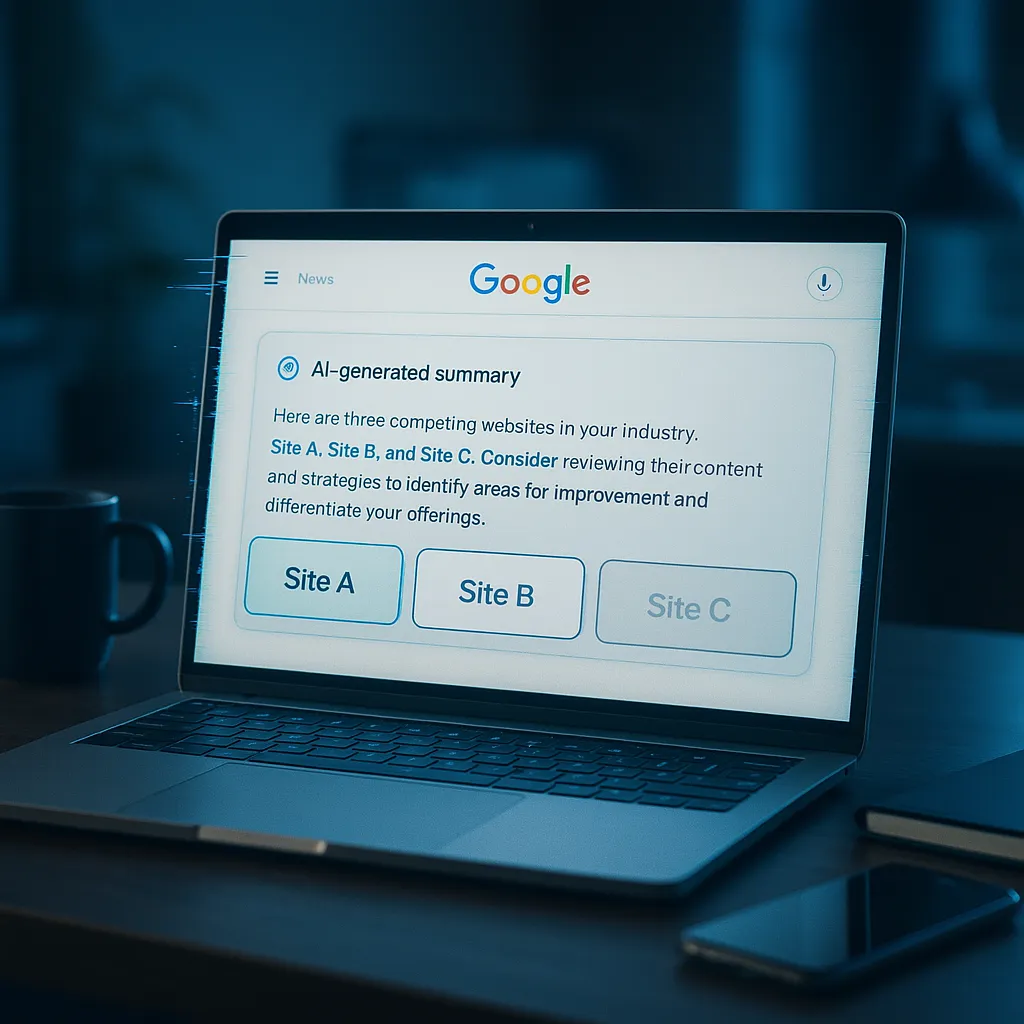SEO for Google’s AI Overviews: What Business Owners Need to Know (Without the Jargon Overload)

If your site isn’t showing up in AI-generated summaries... you're not just missing clicks—you’re missing
credibility.
By David Singer
Let’s be honest—keeping up with Google’s ever-changing search features can feel like trying to hit a moving target…while blindfolded…on a unicycle.
Now, throw in AI Overviews, and suddenly the SEO landscape feels even foggier.
But here’s the good news: you can still show up, stand out, and stay relevant in AI-powered search results—
without rebuilding your entire website or chasing the latest fads.
Here’s what business owners need to know about optimizing for Google’s AI Overviews—and how to stay visible when AI starts doing the summarizing.
1. Answer the Whole Question (Not Just the Keywords)
Think of AI Overviews like that one overachiever in school who gives extra credit answers—Google’s AI doesn’t just want a snippet, it wants a summary.
So if your content is comprehensive, clear, and helpful—you’re already halfway there. Google favors sources that actually
answer the question, not just flirt with it.
That means:
-Covering the “why” and “how” behind the topic
-Structuring your content so it’s skimmable but thorough
-Offering a clear POV that shows authority and expertise
2. Topics > Keywords
Yes, keywords still matter—but AI is more interested in conceptual relevance. In plain English? Google wants to know if your content understands the bigger picture.
Instead of chasing exact-match keywords, structure your pages around full topics, supported by subtopics. Think of it like building a mind map, not a checklist.
This makes your content more likely to be recognized as authoritative—especially when AI is trying to give users a quick, confident answer.
3. Link Like You Mean It
Your backlink profile still counts. But now, internal links are also getting more attention.
Why? Because they help Google (and AI) understand the structure of your site—and trust you more.
Pro tip: Don’t just link for the sake of it. Create natural connections between related pages and anchor text that reflects real intent. Not “click here.” Ever.
4. Structured Data = Trust Signals
Google’s AI needs help understanding your content. You can give it a boost by using structured data (like schema markup) to spell things out.
It’s like handing Google a flashlight in a dark room.
Also: citing credible sources, including outbound links to authoritative sites, and using stats and facts where possible adds legitimacy that AI Overviews love to surface.
5. UX Still Rules
No surprise here: if your site is slow, confusing, or frustrating to navigate, AI isn’t going to recommend it.
Focus on:
-Mobile-first design
-Fast loading times
-Clear calls to action
-Logical navigation
Because AI (just like your customers) prefers websites that feel effortless to use.
6. Don’t Forget Long-Tail Keywords
With AI Overviews often paraphrasing natural language queries, content that targets conversational, long-tail searches has a better shot at being included.
Think:
Instead of “SEO tips,” go with “how to optimize content for AI search results in Google.” That’s the kind of phrasing users and AI are now leaning into.
7. Top 10 or Bust
AI Overviews usually pull from sources already ranking in the top 10 results. So yes—traditional SEO rankings still matter.
A lot.
Don’t sleep on the basics:
-Meta titles and descriptions that actually make people click
-Clean site structure
-Regularly updated, high-quality content
It’s not glamorous, but it’s still the foundation AI builds on.
So… What Now?
If you’re a business owner wondering whether your site is ready for Google’s AI era—you’re not alone. Most people are still catching up.
But if you want your brand to show up confidently in AI-powered results—without guessing or burning hours on trial and error—I’d love to help.
Let’s chat.
CONTACT
Need assistance with anything?
Questions?
Let us know!
news & updates
By providing my email and phone number, I agree to receive text messages and emails from Skystrike Marketing, LLC. I also agree to terms & conditions and privacy policy provided by the company.
© 2025 Skystrike Marketing, LLC
